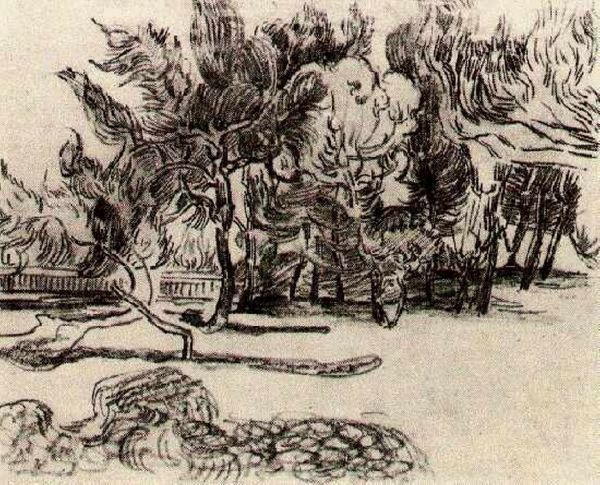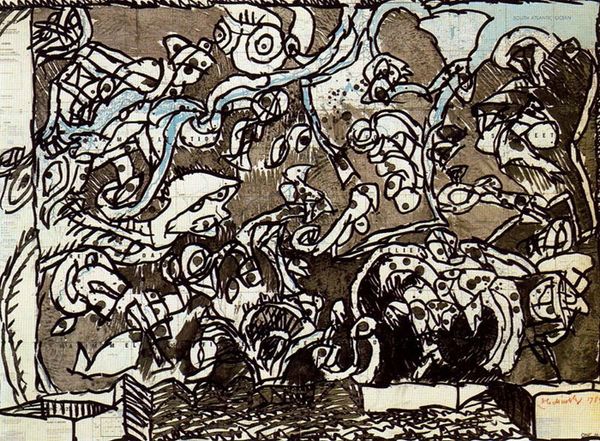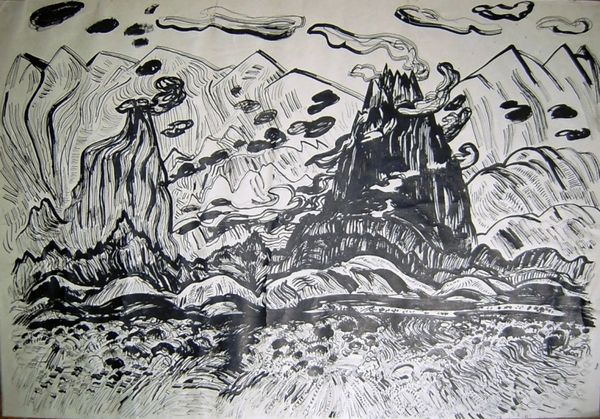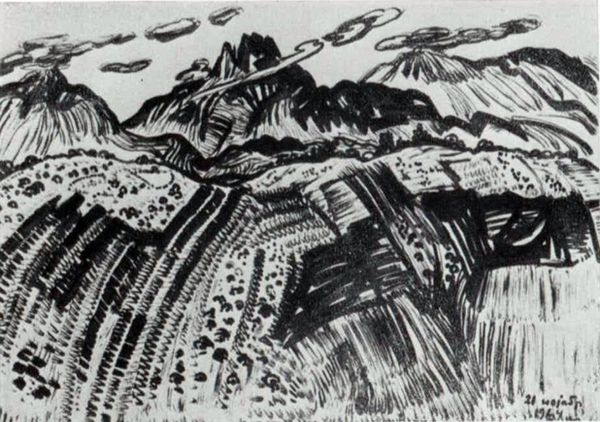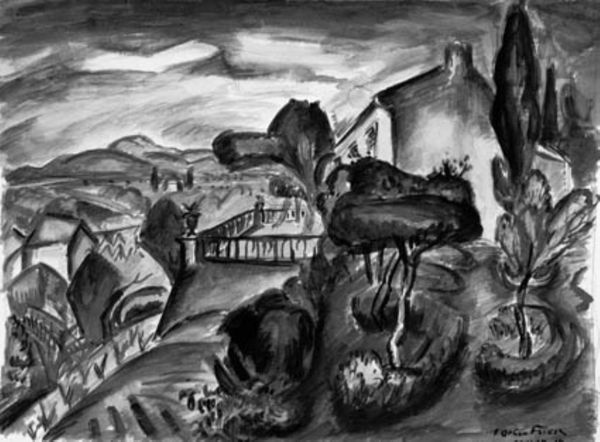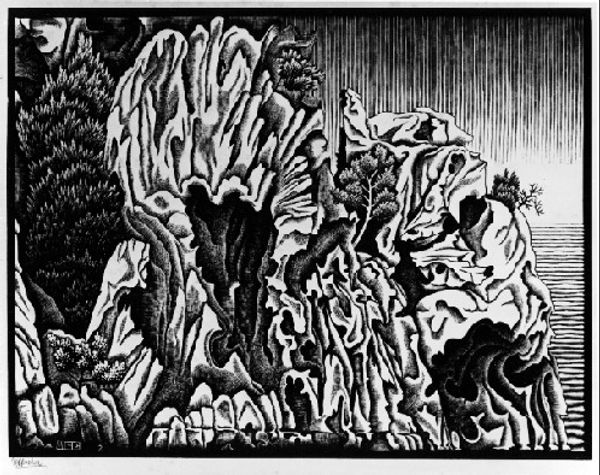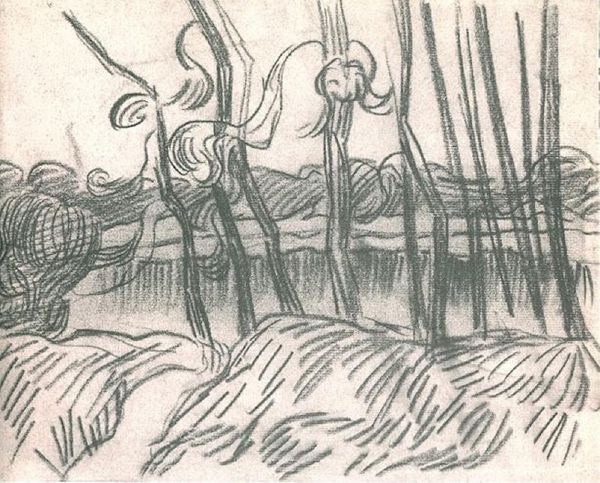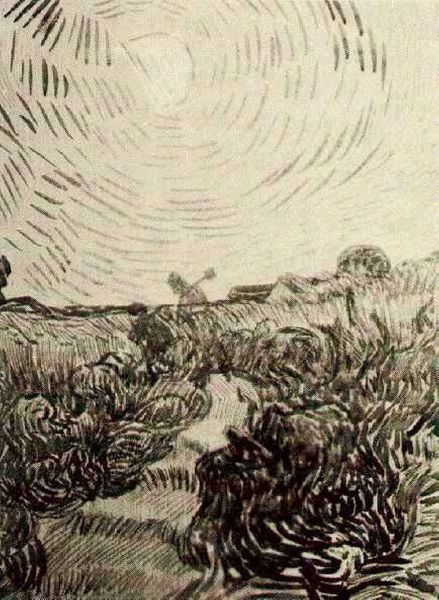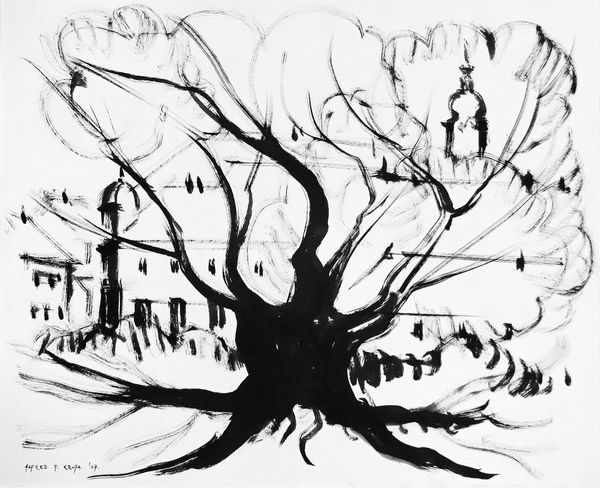
drawing, ink
#
drawing
#
pen drawing
#
impressionism
#
landscape
#
ink
#
post-impressionism
Copyright: Public domain
Vincent van Gogh made this ink drawing on paper, titled "Landscape with Houses among Trees and a Figure," sometime before his death in 1890. This drawing embodies Van Gogh's personal interpretation of the world, reflecting his emotional and psychological state. It diverges from traditional landscape art, which often sought to idealize nature. Instead, we find raw, expressive lines, characteristic of the Post-Impressionist movement. The drawing gives us insight into the social conditions that shaped Van Gogh's artistic production. He was an outsider, both socially and within the art world. His work often reflects his struggle with mental illness and his profound connection with nature. To fully understand this work, a historian would consider Van Gogh's personal letters, the artistic and social context of late 19th-century Europe, and the institutional structures of the art world that often marginalized artists like him. The meaning of art is always contingent on the social and institutional context in which it was created and received.
Comments
No comments
Be the first to comment and join the conversation on the ultimate creative platform.
